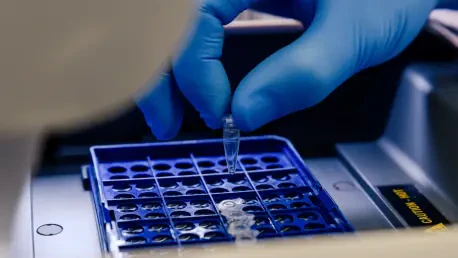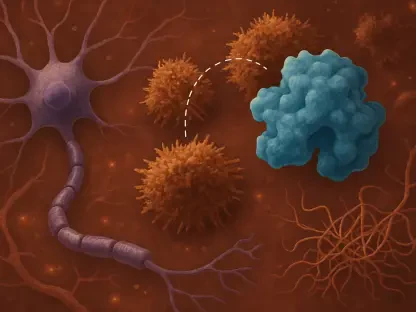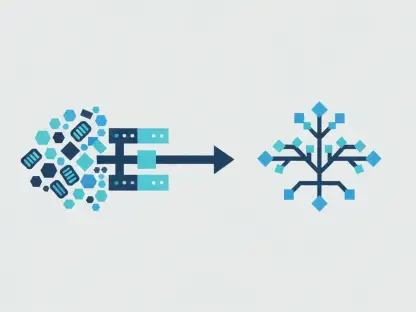Glycomine, a leading biotechnology company based in San Francisco, has achieved a notable milestone by raising $115 million in funding for their pioneering project, GLM101. This development is particularly significant in an economic environment where securing substantial capital remains challenging. Glycomine’s innovative approach is focused on tackling rare diseases, with a particular emphasis on congenital disorders of glycosylation (CDGs), conditions marked by genetic defects that impair the glycosylation process.
Financial Milestone
Securing Major Funding
Glycomine’s securing of $115 million represents a substantial financial achievement, equipping the company with the necessary resources to advance the GLM101 program through the critical Phase IIb clinical trials. This funding milestone is crucial for the intricate and costly stages of drug development, particularly for rare diseases which often demand significant investment in research and development. The ability to finance these advanced stages of clinical trials not only underpins the potential success of GLM101 but also validates the biotech firm’s strategic direction and capability to deliver transformative treatments.
The importance of this funding cannot be overstated, as it ensures that Glycomine can continue developing their lead drug candidate without interruption. The financial backing supports various facets of the trial process, including securing clinical trial sites, enrolling patients, and ensuring regulatory compliance. It is a clear demonstration of the company’s commitment to addressing the needs of those affected by CDGs. This investment marks a significant step forward in the mission to bring a novel and effective treatment to a patient population in desperate need of therapeutic advancements.
Investor Confidence
In an era where the biotech industry faces heightened scrutiny and economic challenges, Glycomine’s ability to attract $115 million in investment underscores the robust confidence investors have in the company’s scientific and clinical capabilities. This significant financial backing reflects a broader belief in Glycomine’s approach and the potential impact of GLM101. The investors’ confidence is likely driven by promising early clinical data, the innovative drug delivery technology, and the company’s strategic focus on rare diseases with high unmet medical needs.
The robust investment interest in Glycomine also signals positive implications for ongoing and future funding opportunities. A successful Phase IIb trial could pave the way for additional financial support, including potential public offerings. Strong investor confidence can enhance the company’s market position, making it more attractive for future partnerships, mergers, or acquisitions. The financial accomplishment serves as a testament to Glycomine’s potential to revolutionize the treatment of rare diseases, thereby bolstering the company’s prospects for long-term growth and success.
Focus on Rare Diseases
Targeting Neglected Conditions
Glycomine’s dedication to rare diseases, particularly congenital disorders of glycosylation (CDGs), positions the company as a notable player in an often overlooked niche of the biotech industry. CDGs are inherently complex and involve genetic defects that significantly impair the glycosylation process, which is essential for proper protein and cell function. By directing their efforts towards these neglected conditions, Glycomine is addressing a critical area of unmet medical need, providing hope to patients and families affected by these debilitating disorders.
The company’s focus on rare diseases is particularly impactful because these conditions traditionally attract less investment compared to more common diseases. This is primarily due to the perceived limited market potential and the high costs associated with developing treatments for small patient populations. However, Glycomine’s strategic commitment to CDGs not only highlights their pioneering spirit but also underscores the importance of equitable access to medical advancements. By prioritizing these neglected conditions, Glycomine is not only contributing to scientific progress but also fostering a more inclusive approach to healthcare.
Addressing PMM2-CDG Variant
The GLM101 program specifically targets the PMM2-CDG variant, one of the most severe forms of congenital disorders of glycosylation. This genetic condition results from deficiencies in the phosphomannomutase 2 (PMM2) enzyme, leading to a cascade of systemic effects that severely impact patients’ health. Symptoms can vary widely but often include neurological impairments, organ dysfunction, and developmental delays. Glycomine’s focus on this particular variant underscores their commitment to tackling the most challenging and underserved aspects of rare diseases.
By concentrating their efforts on the PMM2-CDG variant, Glycomine is addressing a condition that poses substantial clinical challenges. Patients with PMM2-CDG often endure significant health burdens and have limited treatment options available. The innovative approach taken by Glycomine aims to provide these patients with a viable treatment that can mitigate the disease’s progression and improve their quality of life. This targeted strategy not only demonstrates good scientific judgment but also highlights the company’s dedication to making a meaningful impact on patients suffering from complex genetic disorders.
GLM101 Program Details
Innovative Treatment Approach
Glycomine’s GLM101 program employs an innovative treatment methodology that encapsulates mannose-1-phosphate within lipid nanoparticles (LNPs). This advanced delivery system is designed to effectively bypass the dysfunctional PMM2 enzyme, thereby restoring the normal glycosylation process. The use of lipid nanoparticles is a cutting-edge approach in drug delivery, allowing for precise targeting and improved bioavailability of the therapeutic agent. This technique promises to enhance the efficacy of mannose-1-phosphate, ensuring it reaches the necessary cellular structures to rectify the underlying genetic defect.
The approach adopted by the GLM101 program is particularly noteworthy because of its potential to address the broad systemic effects of PMM2-CDG. By restoring proper glycosylation, the treatment aims to resolve the myriad symptoms associated with the disorder. This method has the potential to transform the standard of care for patients who currently have limited therapeutic options. The innovative use of LNPs encapsulating mannose-1-phosphate signifies a breakthrough in the treatment of genetic disorders, offering a sophisticated solution to a complex biochemical problem.
Clinical Successes
Initial clinical data from Phase IIa trials of GLM101 have shown promising outcomes, demonstrating meaningful improvements in the health of adult and adolescent patients with PMM2-CDG. These results validate the therapeutic potential of Glycomine’s novel approach and set a strong foundation for the upcoming Phase IIb study. The early trials exhibited significant clinical improvements, such as better neurological function, reduced organ failure incidents, and overall enhanced quality of life for patients. These encouraging findings offer hope for substantial therapeutic benefits as the program advances.
The upcoming Phase IIb study is poised to further substantiate these initial successes, aiming to confirm the treatment’s efficacy and safety on a larger scale. This phase will involve more extensive patient populations and longer treatment durations, providing comprehensive data that will be crucial for potential regulatory approvals. The promise shown in initial trials sets an optimistic tone for future stages of development, reinforcing the notion that GLM101 could become a groundbreaking treatment for PMM2-CDG. This clinical momentum underscores the potential of the program to deliver transformational outcomes for a rare and severely debilitating condition.
Financial and Clinical Implications
Advanced Clinical Stage
Advancing GLM101 through the Phase IIb clinical trials represents a critical step in preparing the drug for potential regulatory approvals and market entry. This stage in clinical development is foundational, as it not only tests the efficacy and safety of the treatment in larger patient cohorts but also provides necessary data to support further progression in the drug approval process. The successful completion of Phase IIb trials would position Glycomine for pivotal Phase III trials, which are essential for obtaining regulatory approval and making the treatment available to patients.
The progression through advanced clinical stages highlights the importance of meticulous scientific and clinical planning. The complexity of rare disease drug development involves navigating rigorous regulatory requirements, securing patient enrollment, and ensuring consistent trial management. A successful Phase IIb trial would not only reinforce GLM101’s therapeutic potential but also enhance the credibility of Glycomine’s scientific approach. This pivotal development phase is crucial for transforming innovative research into accessible treatments that can significantly impact patient lives.
Market Trends and Investment
The strong investor interest in Glycomine’s development of GLM101 reflects broader market trends that prioritize innovative and impactful biotechnological solutions. In an industry where high-risk investments are common, the substantial funding secured by Glycomine is indicative of a growing recognition of the value in pioneering treatments for rare diseases. Investors are increasingly acknowledging the potential for significant returns on investment from successful rare disease therapies, as these treatments often come with premium pricing and strong market demand due to the lack of existing options.
This positive market sentiment could have far-reaching implications for Glycomine’s future funding opportunities and strategic market positioning. By demonstrating substantial progress in their clinical trials and maintaining a pipeline of innovative solutions, Glycomine is well-positioned to attract further investment, potentially through additional funding rounds or public offerings. The alignment of investor interests with the company’s strategic goals underscores the mutual benefits of advancing groundbreaking treatments. This trend not only supports Glycomine’s financial strategy but also encourages continued innovation and development within the broader biotech landscape.
Broader Potential
Expanding Therapeutic Portfolio
Glycomine’s proprietary liposomal technology, utilized in the GLM101 program, holds significant potential beyond the treatment of PMM2-CDG. The innovative lipid nanoparticle encapsulation approach can be adapted to deliver therapeutic agents for a range of other rare diseases involving glycosylation disorders. This broadened therapeutic application represents a valuable expansion of Glycomine’s portfolio, positioning the company to address multiple rare conditions with similar underlying mechanisms. Harnessing this technology’s versatility could lead to the development of a suite of targeted therapies that provide substantial clinical benefits across various rare diseases.
The potential to leverage this proprietary technology for other indications not only enhances Glycomine’s strategic advantage but also underscores the adaptability and scalability of their approach. By expanding the therapeutic portfolio, the company can diversify its impact on rare disease treatment and align with the mission of addressing critical unmet medical needs. The broader application of this technology may also attract further investment and partnerships, facilitating collaborative efforts to tackle complex genetic disorders. Glycomine’s innovative delivery system thus represents a cornerstone for advancements in rare disease therapies, fostering hope for expanded clinical success.
Future Prospects
The progress achieved with GLM101 serves as a beacon for other rare disease programs, illuminating the path for developing treatments with profound therapeutic impacts. Glycomine’s strategic positioning and innovative approach to drug delivery exemplify the potential for significant breakthroughs in the field of rare diseases. As the GLM101 program unfolds and demonstrates success, it sets a precedent for future initiatives, encouraging continued investment and research into similar conditions. Glycomine’s efforts highlight the importance of targeted research, where focused intervention can lead to transformative outcomes for patients facing limited options.
Looking ahead, the broader implications of Glycomine’s work suggest a transformative trajectory for rare disease treatment. The potential success of GLM101 could pave the way for further advancements in treating genetic disorders, potentially reshaping the landscape of medical interventions. Glycomine’s commitment to innovation and addressing unmet needs signals a new era of possibilities for patients with rare diseases. The strategic focus on precise and impactful solutions exemplifies a forward-thinking approach, poised to make lasting contributions to the field of medical science and patient care.
Conclusion
Glycomine, a biotech leader based in San Francisco, recently hit a major milestone by securing $115 million in funding for their groundbreaking project, GLM101. This achievement stands out, especially given the current economic climate where obtaining large sums of capital is challenging. Glycomine’s innovative focus addresses rare diseases, with a particular spotlight on congenital disorders of glycosylation (CDGs). These are genetic conditions that disrupt the glycosylation process, a critical procedure where sugars are added to proteins and lipids, affecting normal bodily functions. GLM101 aims to provide solutions for these complex and often debilitating disorders, bringing hope to those affected by CDGs. The substantial funding not only validates Glycomine’s approach but also underscores the potential impact of their research on the medical field. As they move forward with GLM101, Glycomine continues to demonstrate its commitment to advancing treatment for rare genetic diseases, offering brighter prospects for patients facing these challenges.









